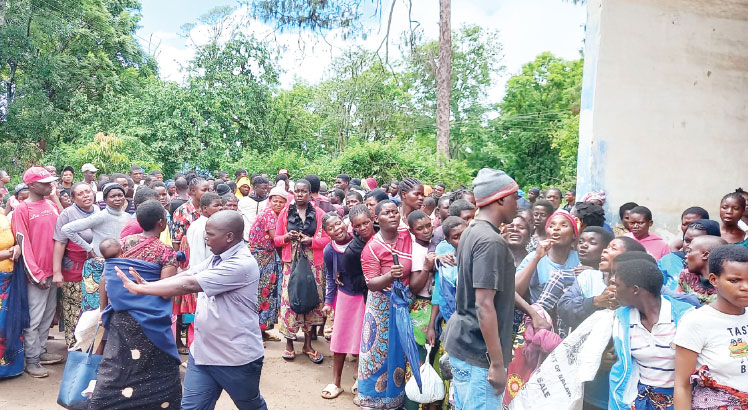Maize yield harvestmay drop by 22.5%
Maize is the staple of most of southern Africa.
In Malawi, it supplies two-thirds of the national calorie intake. Nine out of 10 farming households produce maize and devote over 70 percent of their land to growing it.
Most farming households are vulnerable to the rainfall patterns. Over 90 percent of farmers in the country rely solely on rain to irrigate their crops.
The prevailing weather pattern changes driven by El Niño, an unusual warming of surface waters in the eastern tropical Pacific Ocean, will have harsh impact on maize production in Malawi.
We developed a model from historical district crop data and El Niño events since the 1980s.
The model uses statistics and mathematics to study the cause and effect of weather patterns. Historically, two out of every three El Niño events have coincided with reduced maize harvests of 22.5 percent on average,
A fall of this magnitude would result in millions of people relying on food aid.
The shortage also affects both formal and informal maize markets, leaving rural food producers with much less maize to sell.

Though higher prices would provide some support to rural households that successfully grow maize, urban households have to cope with depressed economic conditions and higher prices.
Based on the findings, we recommend social protection programmes for poor people in both rural and urban areas. These can include cash transfers or government food aid.
Policymakers also need to monitor the impact of El Niño shocks so they can respond quickly by importing more maize, with international assistance.
They need to develop a set of policies, including investments in helping farmers install irrigation for their crops and diversifying income-generating opportunities beyond traditional farming.
This year’s El Niño is forecast to be among the strongest in the last 40 years.
It has been accompanied by a strong Indian Ocean Dipole, a similar climate event which often amplifies the impacts of El Niño.
Together, they typically cause either flooding or widespread drought.
In 2016, an El Niño drought in southern Africa left over 60 million people in the region seeking food aid, including 40 percent of Malawi’s population at that time.
In Malawi, the El Niño season began in November 2023.
However, not all El Niño years create food production shortfalls.
Over the past 40 years, there have been 11 El Niño episodes globally.
However, studies show that only seven negatively affected crop production in Malawi and four did not.
This is because El Niño differs from event to event: in some years, El Niño may bring more rainfall, but in most years, it causes less rainfall than normal.
In those seven negatively affected years, Malawi harvested 22.5 percent less maize than expected on average.
Besides, the changes in rainfall and temperature can have widely different impacts on crops and the rural population in different parts of the country.
For instance, in both Malawi and Zambia, the southern districts often experience larger negative impacts than those in the north.
This is true across the region too.
In Malawi, the Ministry of Agriculture has announced mitigation advice for rural farmers. These include planting with the earliest rains, using manure to improve moisture retention in the soil, growing early-maturing crops, harvesting rainwater and letting it infiltrate into the soil as well as planting drought-resistant crops.
But these measures might not be enough. Some cost money that many farmers do not have.
And domestic food production could still be negatively affected by El Niño this year.
If the much lower maize harvest does occur, many people in Malawi could end up relying on food aid, with people lining up for hours for grain as they did during the 2016 drought. Formal and informal imports of maize from neighbouring countries are common practices and usually mean that maize is available for the government to buy and distribute. But, if there are poor harvests across the region, there won’t be enough food to be sold informally or formally across borders.
Rural food producers will also have much less maize to sell.
However, they will sell at higher prices, which will provide some support to rural maize sellers.
However, urban households will have to cope with depressed economic conditions and higher food prices.
Urgent steps
In the longer run, Malawi should prioritise investments aimed at diminishing its reliance on rainfed agriculture.
This involves both broadening farmers’ access to irrigation and diversifying income-generating opportunities beyond traditional farming.—Conversation
*Jamali and Nagoli are researchers at the National Planning Commission and Chiduwa is a scientist at the International Maize and Wheat Improvement Centre. They contributed to the original research this article is based on





